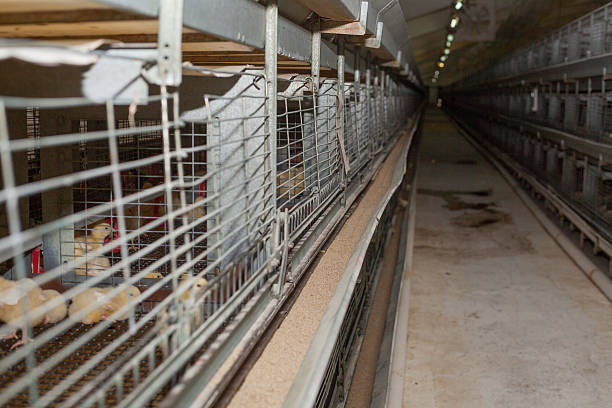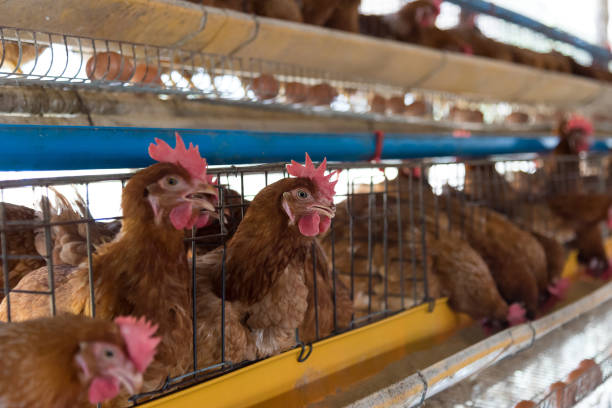Maximize Your Broiler Farm Profits with Efficient Poultry Cage Systems
Maximize Your Broiler Farm Profits with Efficient Poultry Cage Systems
The broiler farming industry is a fast-paced, demanding sector where efficiency and productivity are paramount. To thrive in this competitive landscape, producers are constantly seeking innovative solutions to optimize their operations. One such solution that has gained significant traction in recent years is the adoption of poultry cage systems for broiler production. While traditional floor systems have been the norm for a long time, cage systems offer a multitude of advantages that can translate into higher profits and a more sustainable business model. This article will delve into the ways efficient poultry cage systems can maximize your broiler farm profits.
Understanding Poultry Cage Systems for Broilers
Before we jump into the profit-maximizing aspects, let’s first understand what a poultry cage system for broilers entails. Unlike layer cages which are designed for egg production, broiler cages are specifically engineered to provide a controlled environment for meat birds to grow efficiently and reach market weight quickly.
These systems typically consist of multiple tiers of cages, made from sturdy, corrosion-resistant materials. Each cage is designed to comfortably house a specific number of birds, allowing for optimized stocking densities. The cages are equipped with automated feeding and drinking systems, ensuring that the birds have constant access to nourishment and hydration. Waste removal is also automated, maintaining a clean and hygienic environment within the broiler house.
Key Benefits of Poultry Cage Systems
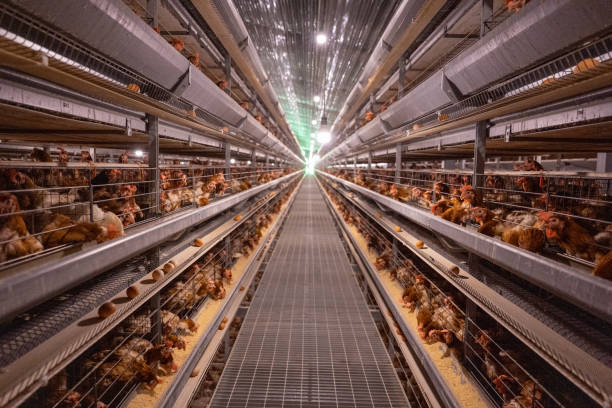
Improved Space Utilization: One of the most significant advantages of cage systems is their ability to drastically improve space utilization. By stacking cages vertically, you can house significantly more birds within the same floor area compared to traditional floor systems. This translates to a higher production capacity without the need for costly expansion of your farm.
Enhanced Biosecurity: Cage systems offer a more controlled environment, making it easier to implement biosecurity measures. The separation of birds into cages reduces the risk of disease transmission. Automated waste removal systems minimize the build-up of ammonia and other harmful gases, further contributing to a healthier environment and reducing the incidence of disease.
Better Feed Conversion Ratio (FCR): With individual cages, it’s easier to monitor feed consumption and tailor feeding programs to meet the specific needs of the birds. This targeted approach can lead to a better feed conversion ratio, meaning that birds require less feed to reach their target weight. This translates directly into lower feed costs, a major expense in broiler production.
Reduced Labor Costs: Automation is a key feature of poultry cage systems. Automated feeding, watering, and waste removal systems significantly reduce the amount of manual labor required for daily tasks. This allows you to allocate your workforce to other important areas of your farm, such as monitoring bird health and optimizing management practices.
Improved Bird Health and Welfare: Contrary to some perceptions, well-designed poultry cage systems can actually improve bird health and welfare. By maintaining a clean and dry environment, cages can reduce the incidence of footpad dermatitis and other common health problems associated with floor systems. The separation of birds also minimizes aggression and feather pecking, leading to a more peaceful environment.
Easier Monitoring and Management: Cages make it easier to monitor the health and performance of individual birds. You can quickly identify any birds that are not thriving and take appropriate action, such as providing targeted treatment or adjusting feeding strategies. This proactive approach can prevent minor problems from escalating into major health issues.
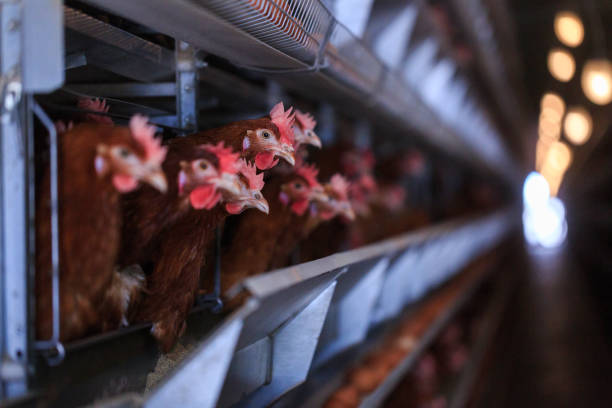
Higher Meat Quality: By reducing the risk of bruising and injuries, cage systems can improve the overall quality of the meat produced. Birds raised in cages are also less likely to come into contact with their own waste, which can further improve hygiene and reduce the risk of contamination.
Maximizing Profits Through Efficient Cage Management
While investing in a poultry cage system is a crucial first step, the real key to maximizing profits lies in efficient cage management practices. Here are some key strategies to consider:
Optimizing Stocking Density: Finding the optimal stocking density for your cages is essential. Overcrowding can lead to stress, disease, and reduced growth rates, while understocking can reduce your overall production capacity. Work with your equipment supplier and consult with poultry experts to determine the ideal stocking density for your specific breed and cage system.
Implementing a Precise Feeding Program: Tailoring your feeding program to the specific needs of your birds is crucial for maximizing feed conversion ratio. Consider factors such as age, weight, and health status when determining the appropriate feed formulation and feeding schedule. Work with a nutritionist to develop a feeding program that optimizes growth and minimizes feed waste.
Maintaining a Clean and Hygienic Environment: Regular cleaning and disinfection of your cages are essential for preventing the spread of disease. Implement a strict hygiene protocol that includes thorough cleaning of cages between flocks, as well as regular disinfection of water lines and feeding systems.
Monitoring Bird Health Regularly: Vigilant monitoring of bird health is crucial for identifying and addressing any potential problems early on. Train your staff to recognize the signs of common poultry diseases and to report any concerns immediately. Implement a proactive health management program that includes regular vaccinations and parasite control.
Providing Adequate Ventilation: Proper ventilation is essential for maintaining a comfortable and healthy environment within the broiler house. Ensure that your ventilation system is adequately sized and properly maintained to remove excess moisture, ammonia, and other harmful gases.
Controlling Temperature and Humidity: Maintaining optimal temperature and humidity levels is crucial for bird comfort and performance. Install heaters and cooling systems as needed to maintain a consistent temperature within the broiler house. Use humidity control systems to prevent the build-up of excessive moisture, which can contribute to disease and poor litter quality.
Ensuring Adequate Lighting: Lighting plays a crucial role in broiler growth and development. Provide adequate lighting to encourage activity and feeding, but avoid excessive light intensity, which can lead to stress and aggression.
Investing in Training and Education: Providing your staff with proper training and education is essential for ensuring that they are equipped to manage your cage system effectively. Train them on all aspects of cage management, including feeding, watering, waste removal, biosecurity, and bird health monitoring.
Choosing the Right Poultry Cage System
Selecting the right poultry cage system is a critical decision that will impact your profitability for years to come. Here are some factors to consider when making your choice:
Cage Design: Look for cages that are well-designed and constructed from durable, corrosion-resistant materials. The cages should be spacious enough to allow birds to move freely and comfortably.
Feeding and Watering Systems: Choose a feeding and watering system that is efficient, reliable, and easy to maintain. The system should provide birds with constant access to fresh feed and water, without any spillage or waste.
Waste Removal System: Opt for a waste removal system that is automated and efficient. The system should effectively remove waste from the cages and minimize the build-up of ammonia and other harmful gases.
Ventilation System: Ensure that the cage system is compatible with your ventilation system. The cages should not obstruct airflow or create dead spots within the broiler house.
Biosecurity Features: Look for cage systems that incorporate features that enhance biosecurity, such as enclosed cages and automated cleaning and disinfection systems.
Supplier Reputation and Support: Choose a reputable supplier with a proven track record of providing high-quality equipment and excellent customer support. The supplier should be able to provide you with expert advice on cage management and to assist you with any technical issues that may arise.
Cost Considerations: While cost is an important factor, it should not be the only factor you consider. Focus on the overall value of the system, taking into account its durability, efficiency, and potential to improve your profitability.
Long-Term Sustainability and Profitability
Investing in efficient poultry cage systems is not just about maximizing profits in the short term; it’s also about building a sustainable and profitable business for the long haul. By improving space utilization, reducing labor costs, enhancing biosecurity, and improving bird health and welfare, cage systems can help you create a more efficient and sustainable broiler farm.
In addition, cage systems can help you meet the growing demand for sustainably produced poultry products. Consumers are increasingly concerned about animal welfare and the environmental impact of food production. By adopting cage systems that prioritize bird health and welfare, you can position yourself as a responsible and sustainable producer, attracting customers who are willing to pay a premium for high-quality, ethically raised chicken.
Conclusion
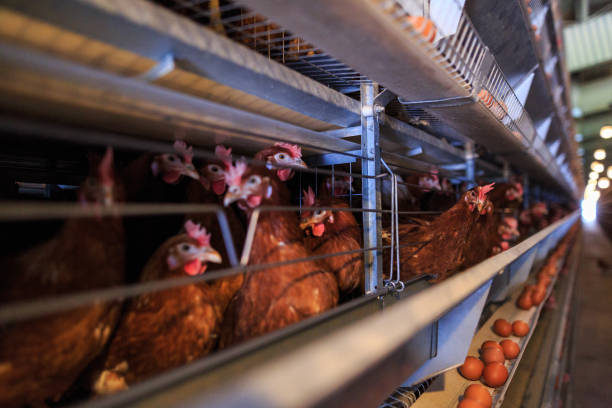
Efficient poultry cage systems offer a compelling solution for broiler farmers looking to maximize their profits and build a sustainable business. By improving space utilization, reducing labor costs, enhancing biosecurity, and improving bird health and welfare, cage systems can significantly boost your bottom line. However, realizing the full potential of cage systems requires careful planning, efficient management practices, and a commitment to continuous improvement. By investing in the right equipment, implementing effective management strategies, and staying up-to-date on the latest industry trends, you can unlock the full profit-maximizing potential of poultry cage systems and secure a bright future for your broiler farm.




